The transformation of the Agnes Etherington Art Centre is beginning to take shape.
The galleries are currently closed, as more than 17,000 objects in Agnes’s collection are being packed and moved off site, and after a year of community-engagement, two architectural renderings have been released, giving the Queen’s community its first look at a transformed art centre.
Director and Curator Emelie Chhangur commends Queen’s for supporting Agnes’s commitment to a community-engaged design process and a close collaboration with the architectural team comprised of the internationally renowned Toronto-based firm KPMB Architects, led by architects Bruce Kuwabara and Indigenous Affairs consultant Georgina Riel. “By enacting the values of Equity, Diversity, Inclusion, Indigenization and Accessibility (EDIIA) in the very making of Agnes Reimagined, we ensure that we truly transform Agnes, from the ground up, and demonstrate Queen’s commitments to honouring the Truth and Reconciliation Commissions Calls to Action,” says Chhangur.
In 2026, Agnes will emerge as the largest public university-affiliated museum in this country and a champion of museological change where Indigenous and Western world views sit side by side as equals.
Agnes Reimagined would not be possible without the leadership and philanthropic support of the late Alfred Bader, BSc'45, BA'46, MSc'47, LLD'86, Isabel Bader, LLD’07, and Bader Philanthropies, Inc., who are longtime supporters of Queen’s and the arts. Bader Philanthropies is the lead donor with a total $75 million (USD) transformational gift. The Bader Collection at Agnes is made up of more than 500 works of art and is and the most comprehensive collection of authenticated paintings by Rembrandt van Rijn and his circle in any institution within Canada.
“Alfred Bader envisioned Queen’s having the finest art museum of any university in Canada,” says Vice-Principal (Advancement) Karen Bertrand, Artsci’94. “The transformative gift from the Baders will build on the initial vision of Dr. Bader and position Queen’s as a premier destination for education and research in the visual arts. Once complete, this world-class art museum will be a tremendous gift to Queen’s, Kingston, and art lovers everywhere.”
Agnes Reimagined involves renovating the historic Etherington House and transforming it into a live-in artist residency and community-facing cultural hub. Construction of a new three-floor configuration to the art centre supports a 200 per cent increase in exhibition and alternative programming spaces for curatorial experimentation and public programming and engagement; the first-ever Indigenous self-determination spaces for the appropriate care, ceremony and access by Indigenous communities of their ancestors and cultural belongings currently residing at Agnes; and new art study spaces, technical art history and art conservation labs—all of which reimagine the entangled civic, social and pedagogical role of a 21st century university museum.
“Agnes Reimagined is slowly inching toward other museum temporalities, atmospheres, and attitudes to help us erode systems of categorization and separation, transform institutional limitations that hold onto the past and gatekeep the future, and take seriously what really is at stake to ensure the museums of the future are alive, nimble, and poised to inhabit the world as it is rightfully changing,” says Agnes Director Emelie Chhangur. “To change museum culture, we must first change its architectures! I believe it is only within the experimental milieu of the university museum that this kind of radical transformation can take hold.”
The new building will see advanced art teaching and research labs for the art conservation program and enhanced object-based learning for the Department of Art History & Art Conservation leading to greater collaboration between the department and museum. It will create new opportunities for groundbreaking technical art research and experiential art-based learning for art students, as well as a range of other academic disciplines, including engineering, business, health sciences, humanities, and physical sciences. This contributes to the university’s strategic goals by placing a greater emphasis on integrating research into the student experience, strengthening Queen’s presence globally and embedding Queen’s in the community.
Art History and Art Conservation Department Head Norman Vorano says the new Agnes will enhance education as students spend more time in the gallery doing hands-on learning, thanks to access to more study spaces and labs in close proximity to the art centre’s vast collections.
“The building is going to fundamentally change the way we study art and art conservation in this country,” Vorano says. “It gives our professors an opportunity to work with some of the best undergraduate and graduate students using the most advanced equipment in the most innovative teaching lab in North America - with the best university art collection within arm’s reach.”
Agnes’s community-engaged design process continues through talking and sharing circles throughout 2023 as the team enters the design phase of the project. Construction is set to begin in spring 2024 and the new building to open in 2026.
Visit the Agnes Reimagined website for more information.



